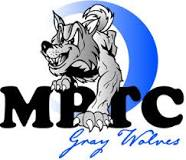What do they do?
Analyze specifications, lay out metal stock, set up and operate machine tools, and fit and assemble parts to make and repair dies, cutting tools, jigs, fixtures, gauges, and machinists' hand tools.
Also known as:
Die Machinist, Die Maker, Die Repair Laborer, Die Repair Technician (Die Repair Tech), Jig and Fixture Repairer, Tool and Die Machinist, Tool and Die Maker, Tool and Die Technician, Tool and Fixture Specialist, Tool Maker, Tool Repairer, Trim Die Maker
-
0.3%
Change
Ranks #19 in job growth rate670Job Openings
Ranks #2 in net job growth
Looking for colleges that offer a specific major? Use the College Match Tool to find your best-matched schools and discover your estimated Net Price!
- High school diploma equivalent (42%)
- Some college, no degree (32%)
- Associate's degree (16%)
- Less than high school diploma (5%)
- Bachelor's degree (3%)
- Master's degree (1%)
- Doctorate or Professional Degree (<1%)
People in this career often know a lot about:
- Mechanical - Knowledge of machines and tools, including their designs, uses, repair, and maintenance.
- Mathematics - Knowledge of arithmetic, algebra, geometry, calculus, statistics, and their applications.
- Production and Processing - Knowledge of raw materials, production processes, quality control, costs, and other techniques for maximizing the effective manufacture and distribution of goods.
- Design - Knowledge of design techniques, tools, and principles involved in production of precision technical plans, blueprints, drawings, and models.
People in this career often have talent in:
- Visualization - The ability to imagine how something will look after it is moved around or when its parts are moved or rearranged.
- Near Vision - The ability to see details at close range (within a few feet of the observer).
- Problem Sensitivity - The ability to tell when something is wrong or is likely to go wrong. It does not involve solving the problem, only recognizing that there is a problem.
- Manual Dexterity - The ability to quickly move your hand, your hand together with your arm, or your two hands to grasp, manipulate, or assemble objects.
- Finger Dexterity - The ability to make precisely coordinated movements of the fingers of one or both hands to grasp, manipulate, or assemble very small objects.
- Control Precision - The ability to quickly and repeatedly adjust the controls of a machine or a vehicle to exact positions.
People in this career often do these activities:
- Measure dimensions of completed products or workpieces to verify conformance to specifications.
- Operate metal or plastic forming equipment.
- Operate grinding equipment.
- Calculate dimensions of workpieces, products, or equipment.
- Review blueprints or other instructions to determine operational methods or sequences.
- Assemble machine tools, parts, or fixtures.
- Operate welding equipment.
- Repair parts or assemblies.
- Inspect metal, plastic, or composite products.
- Select production input materials.
- Mount materials or workpieces onto production equipment.
- Lift materials or workpieces using cranes or other lifting equipment.
- Smooth metal surfaces or edges.
- Polish materials, workpieces, or finished products.
- Measure materials to mark reference points, cutting lines, or other indicators.
- Conduct test runs of production equipment.
- Design tools, fixtures, or other devices for production equipment.
- Shape metal workpieces with hammers or other small hand tools.
- Cut industrial materials in preparation for fabrication or processing.
- Drill holes in parts, equipment, or materials.
- Feed materials or products into or through equipment.
- Adjust temperature controls of ovens or other heating equipment.
This page includes data from:

 Occupation statistics: USDOL U.S. Bureau of Labor Statistics Occupational Employment Statistics
Occupation statistics: USDOL U.S. Bureau of Labor Statistics Occupational Employment Statistics
 Videos: CareerOneStop, USDOL/ETA and the Minnesota Department of Employment & Economic Development
Videos: CareerOneStop, USDOL/ETA and the Minnesota Department of Employment & Economic Development









